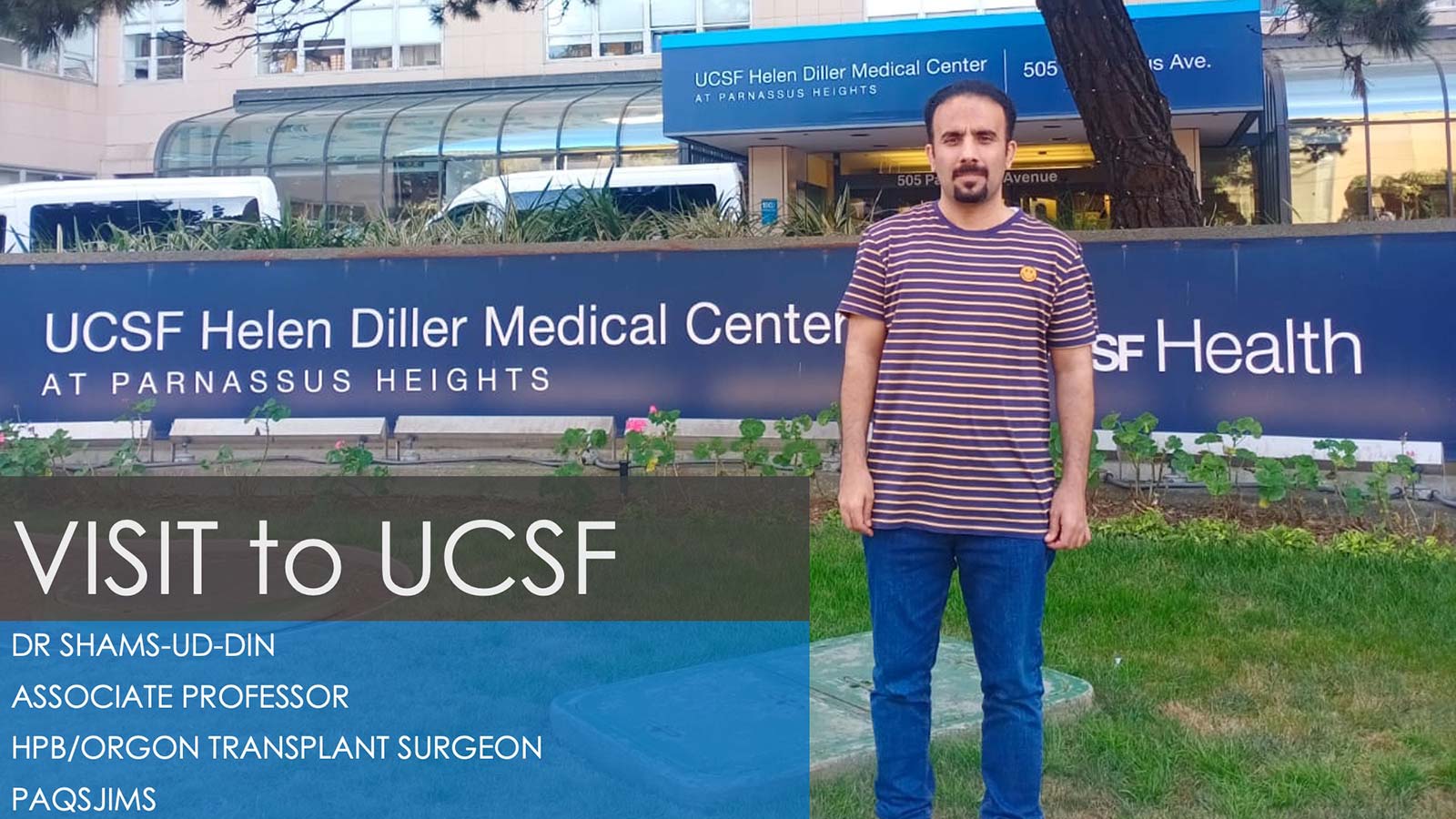Dr. Shams-Ud-Din as part of the TTS-ILTS Paired Transplant Centers Program travelled to UCSF. His trip's purpose was to interact with the UCSF Organ transplant team, to see their protocols of pre and post transplant Patient management, to see deceased donor organ transplantation, organ procurement and normothermic perfusion dynamics and implications.

